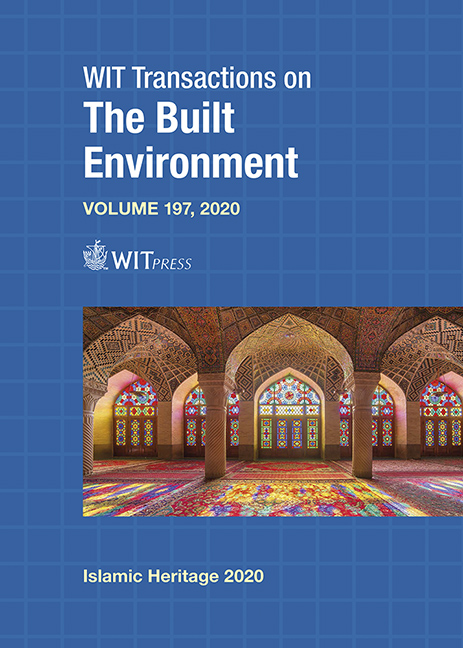LIGHTING DESIGN IN TWO MOSQUE TYPOLOGIES IN THE CITY OF JEDDAH, SAUDI ARABIA
Price
Free (open access)
Transaction
Volume
197
Pages
13
Page Range
125 - 137
Published
2020
Size
1,680 kb
Paper DOI
10.2495/IHA200111
Copyright
WIT Press
Author(s)
RAGHDA HARERI, AREEJ ALAMA
Abstract
Mosques are the most significant building in Muslim communities, where people perform their prayers and gather for social activities. The architecture and design of mosques have undergone significant changes over the centuries due to cultural, economic, and climatic factors. This raises a question regarding the design of the modern mosque. This paper analyses the physical characteristics of two Mosques located in Jeddah city, Saudi Arabia, built at different time periods: the historic Al-Shafi’i Mosque, and the contemporary Al-Farsi Mosque. The analysis focuses on investigating the different design techniques used to lighten the interior space, and how this can be related to the identity of the mosques. In addition, it explores how the orientation of mosques, determined by the Qibla direction, has impacted the indoor lighting quality. This study provides some critical observations demonstrating the importance of the use of light in the mosque’s interior, and the essential impact this has on psychological, physiological and behavioural responses of the mosques’ visitors, with a focus on both daylighting and artificial lighting.
Keywords
artificial lighting, daylighting, orientation, historic mosque, contemporary mosque, indoor lighting quality, interior design, Jeddah, Saudi Arabia




